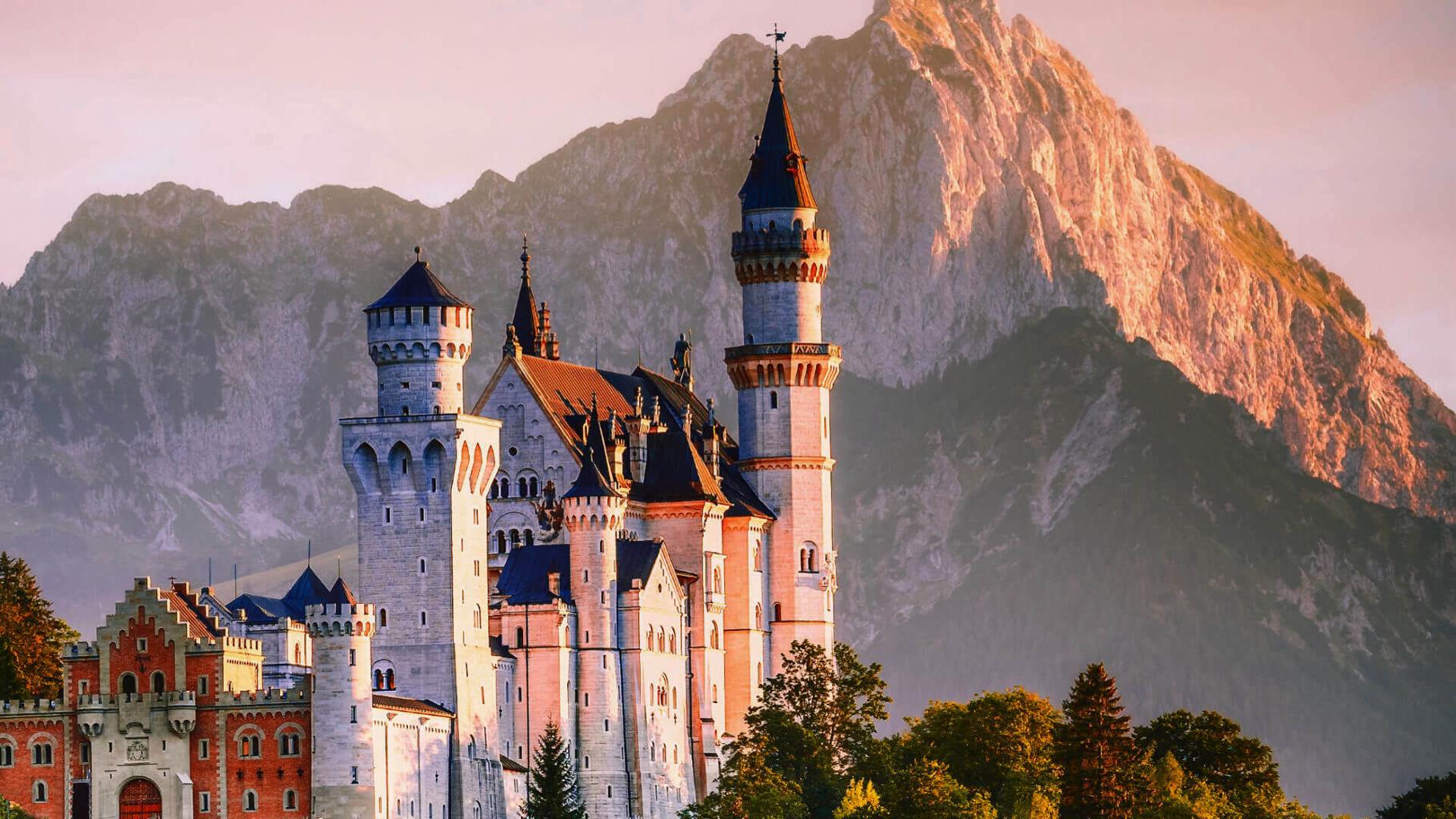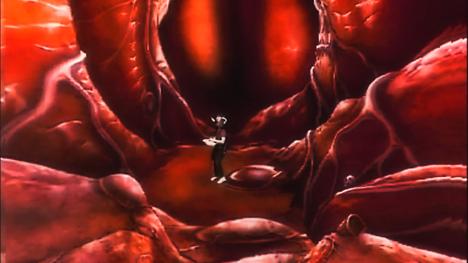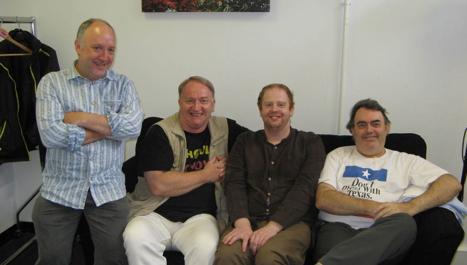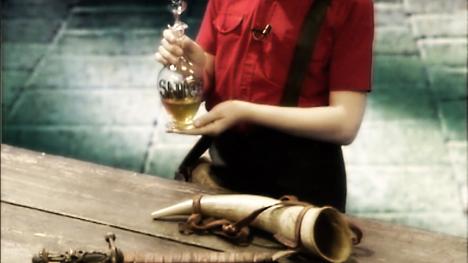Got the 'no new Knightmare' blues? 'The Sword of the Sorcerer' might be just the remedy. Tim Child discusses an exciting new project.
At the present moment it remains a project, but if the plan does come to fruition, you'll see it on Children's BBC in the near future.
(Sadly, this programme was never made. See Why Knightmare ended for more details)
Below, The Quest examines the legend which will form the basis for the programme, and we talk to Tim Child, the creator of Knightmare, and of the new programme, to get an inside look at how 'The Sword of The Sorcerer' will be made.
The Sword of the Sorcerer looks like being one of the best children's programmes ever. Picture the scene: A huge walled citystate, Himallia, built against all the rules of logic on a mountaintop, which has been ruled by a dynasty of kings fairly and astutely for 500 years. Until now... The dynasty has been broken, with the destruction of the Emerald Blade, a powerful weapon used to anoint the next King. The sword has been smashed into thousands of tiny but valuable gems, which have been scattered all over the city, leaving the people without a ruler.
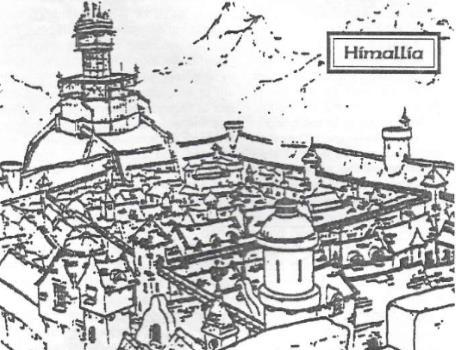
Ferroghast Castle
The only hope seems to be the Seneschal of the Kingdom, a wizard named Warrender, a former aid to the dynasty, who must try to reassemble the sword by finding all the pieces. Unfortunately, just as he is in the process of doing this, the kingdom is invaded.
The invasion comes in the form of a huge mechanical castle called Ferroghast. It is controlled by an evil sorcerer named Scullianus who has somehow managed to import technology from the future into his own time, and has been successful in fusing this technology with traditional magic, creating a phenomenon known as 'Technomancy'. Ferroghast was created using this evil sorcery and with the help of his servants, the mechanical knights called 'Grievers' and his allies the 'Misties'. Scullianus is now intent on using the robot-like fortress to conquer the kingdom. Already he has succeeded in breaching the east wall of the city, where Ferroghast now sits forebodingly. He therefore has access to the kingdom, but not complete control. This is where you come in...
Warrender has up till now been aided in his quest to reassemble the emerald sword by two children who are among the last willing inhabitants of the city, Zandra and Jubal; but these two, while undoubtedly capable, are severely handicapped by their lack of knowledge of the technology which Scullianus has been able to harness to his own dark magic. They need information from the time which this technology is taken from. Fortunately Warrender has found the answer: he has been able to harness the homes of people from our time, and has discovered that young people are the most willing to believe and understand the threat which faces the city. With the help of their counterparts from our world, there may be some hope for Zandra and Jubal's quest yet...
---
Technologically 'Knightmare' was way ahead of its time, but with 'The Sword of The Sorcerer', creator Tim Child believes that he has gone one (even) better. The Quest spoke to him about the similarities and differences between the two programmes, about the reason for the demise of 'Knightmare', and about the new techniques which will be involved in what looks like one of the most exciting projects to emerge since the inception of that programme itself.
"We didn't want to use the same interface that we used for Knightmare. We wanted to do something different. In essence what we don't do with 'The Sword of The Sorcerer' is to send the games player into the arena."
As you may have already realised, The Sword of The Sorcerer is not going to be simply Knightmare II. The new project is a completely unique idea in itself, with a rounded legend, a huge playing area, and a new way for those playing the game to control the action - Tim says that there will be no dungeoneers in the new programme. But surely our helmet-headed friends were one of the most successful aspects of Knightmare? Clearly the march of technology inevitably brings about changes, but why scrap such a tried and tested formula?
Fantasy environment
Tim: "Well, what we do now is partner two young actors who are part of the fantasy with two games players who are at home. Of course they won't really be; it'll be a fantasy home. We can create their own homes in the studio by taking photographs. The advantage of this is that they won't be forced to be blindfolded and walking round a blue studio."
This is the chroma-key technique used in Knightmare in which the fantasy environment was projected onto screens for the dungeoneer's guiders (and the audience at home) to watch, but which meant that the dungeoneer himself, walking around in an entirely blue environment, had to be virtually without sight in order not to spoil his adventure (hence the helmet). This inevitably slowed things down. So with the loss of the dungeoneers what advantages will there be?
Tim: "We'll be able to have much more profound and stylish graphic adventures with much more movement in them. We can have jumping; falling down wells; we can exploit the city we're going to build. We can have more monsters; we can have combat; we can have all the things we couldn't before because somebody was blindfolded."
So for those who watched and enjoyed Knightmare could this programme be seen as its spiritual successor?
Tim: "Yes, I think so. With Knightmare we've gone as far as we can go by allowing people to explore artificial environments. In another three or four years we will be able to go even further than that, and that may be the time to bring something like Knightmare back. It'll then be possible to explore a complete fantasy environment like Knightmare in real time and in high resolution. The trouble at the moment is that technology is at a bridging point. That's one of the reasons Knightmare had to stop: It had gone as far as it possibly could in that phase of the technology that was available at the time.
"The next phase wasn't ready yet, so the very best thing to do was to stop it. The Sword of The Sorcerer takes a different tack. It doesn't involve ordinary games players in the exploration of the fantasy world: it allows them to look into that world and give instructions. It's like Knightmare in which the dungeoneer is played by an actor."
City on a mountain
What about the games environment in 'The Sword of The Sorcerer'? Can anything match up to three levels of the Dungeon beneath Dunshelm?
Tim: "I think so. It's a city built on a mountaintop. Because it's built on a mountaintop, most of the time it's shrouded in clouds. So even during the daytime you can imagine that the streets are all misty and cloudy. It's the biggest games environment we've ever built. The city has approximately twenty streets, with about sixty four houses on them; two major castles at either end of the city and it's got three levels of playability and travel in that it's got a battlement and runs and walkways which criss-cross the city at watchtower level.
"Because we're not being forced to present the fantasy to the children within it, the actors, we'll be able to achieve far more with the technology we have. The entertainment value should be even higher. This is more of an interactive drama and less of a game: that's a comparison with Knightmare."
It's now a matter of weeks until Broadsword Television, the company which produced Knightmare, and which hopes to do 'The Sword of The Sorcerer', hears whether or not the programme is to be made. Let's hope such an innovative and exciting idea is given the chance to fulfil its huge promise.
DownloadFull issue 2 (3.6MB)
